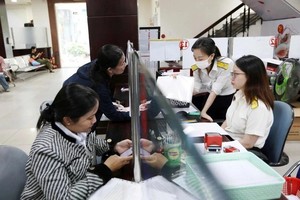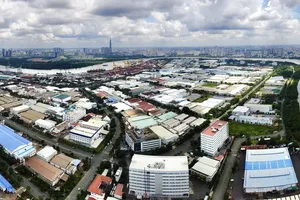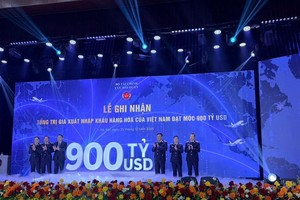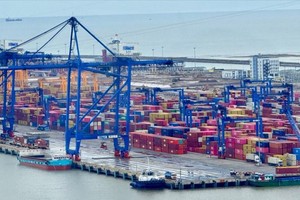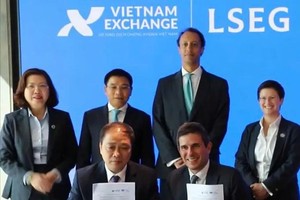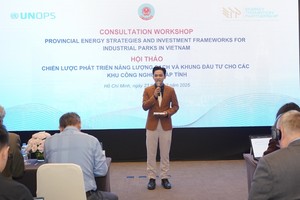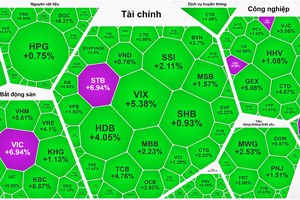 |
Cat Lai Port in Thu Duc City. |
With a population of over 10 million, Ho Chi Minh City has transformed into a global mega-city. However, the necessary logistics infrastructure for supplying goods and services to the city has fallen behind, which not only affects residents' daily lives but also hampers the development of city-based businesses.
Domestic logistics costs triple international rates
Discussing the approved logistics development plan of HCMC, Mr. Nguyen Tuan, Deputy Director of the HCMC Investment and Trade Promotion Center (ITPC), revealed that the city would establish seven logistics centers covering a total area of over 750 hectares. These centers include Cat Lai - Phu Huu, Long Binh, and Linh Trung in Thu Duc City; Cu Chi in Cu Chi District; Tan Kien in Binh Chanh District; Hiep Phuoc in Nha Be District; and Tan Hiep in Hoc Mon District.
Additionally, various projects with similar functions as logistics centers, such as cold storage facilities in Vinh Loc Industrial Park and e-commerce warehouses in Cu Chi, are currently being implemented by businesses. To achieve this goal, the city has set high requirements for attracting experienced investors with the necessary capacity and construction investment capital, as well as investing in the infrastructure system that connects these centers, he added.
As a prominent economic center in the southern region, HCMC aims to achieve a 15 percent annual growth rate in the revenue of logistics services by 2025 and a 20 percent growth by 2030. The city aims to increase the logistics sector's contribution to its Gross Regional Domestic Product (GRDP) to 10 percent by 2025 and 12 percent by 2030. Additionally, it seeks to reduce the national logistics cost compared to the national GDP to approximately 10-15 percent by 2025.
However, the inadequate investment in logistics infrastructure that matches the development needs of businesses and the expanding market scale is hindering the economic growth of HCMC.
Mr. Truong Nguyen Linh, Deputy General Director of First Logistics Development JV Company, stated that the competitiveness of import-export enterprises is significantly impacted by the high logistics costs in Vietnam.
For instance, the transportation cost of a container from HCMC to Hanoi is three times higher than the shipping cost to Europe and the US. Mr. Nguyen Van Sang, Director of Viet Products Import Export Corporation, expressed frustration, highlighting that the shipping cost for transporting a 40-foot container from Shanghai (China) to Saigon Port is US$300-US$400, while the freight cost from HCMC to Northern ports is approximately $1,000.
Moreover, for a country with a large export turnover like Vietnam, especially in agricultural exports, businesses must go through multiple stages that incur significant logistics costs. For example, each time agricultural products from the Northern region are harvested and destined for export to European or American markets, they are required to undergo irradiation treatment. However, the problem is that the irradiation facilities are located only in the Southern region. This situation has a significant impact on the competitiveness of businesses.
Enhancing the competitiveness of waterway transportation
According to many experts, to expedite the investment in logistics infrastructure for both the entire nation and, specifically, HCMC, it is crucial to have a comprehensive understanding of the industry's shortcomings. Firstly, it is important to acknowledge that nearly 70 percent of Vietnam's logistics activities rely on road transport, which incurs significantly higher transportation costs than other modes like inland waterway and maritime transport.
It is essential to bolster investments in developing inland waterways and maritime transportation to alleviate logistics costs. Apart from identifying suitable locations for constructing seaports, the Government should centralize the management of port authorities across provinces and cities while establishing specialized entities with sufficient capabilities to coordinate shipping lines, shipping brokerage firms, and navigator companies.
The logistics industry should improve and digitalize the online electronic exchange system to facilitate freight forwarding procedures and online transactions, as well as implement barcode systems in operations. Additionally, it is important for relevant authorities to regularly conduct dredging activities and expand shipping channels to enhance the capacity for accommodating large-tonnage vessels.
Taking a different perspective, Mr. Nguyen Thanh Nha, CEO of Tan Cang-STC Human Resources Development Limited Company, emphasized the importance of synchronizing the infrastructure system in HCMC, particularly the road networks that connect seaports and neighboring provinces.
The investment in the Can Gio Transshipment Port is seen as a bold and strategic move to make a breakthrough in economic development. In addition, it is essential to improve administrative procedures and establish favorable legal frameworks to enable businesses to access the investment environment more easily. Furthermore, there should be additional capital support policies for logistics enterprises to enhance their capabilities and meet the increasingly stringent standards of both domestic and international markets.
Logistics services in the Southeast region account for 49.2 percent
The Southeast region is home to around 14,800 logistics service providers, with HCMC alone having 11,027 enterprises, contributing to 49.2 percent of the country's overall logistics industry. However, the majority of these entities primarily offer basic services and face challenges such as limited financial resources, with 90 percent being micro, small, and medium-sized enterprises, a lack of coordination, and inadequate investment in modern information technology.
